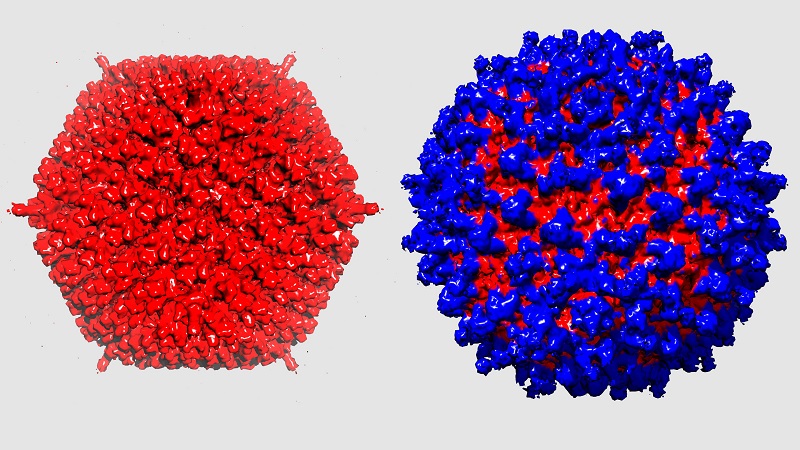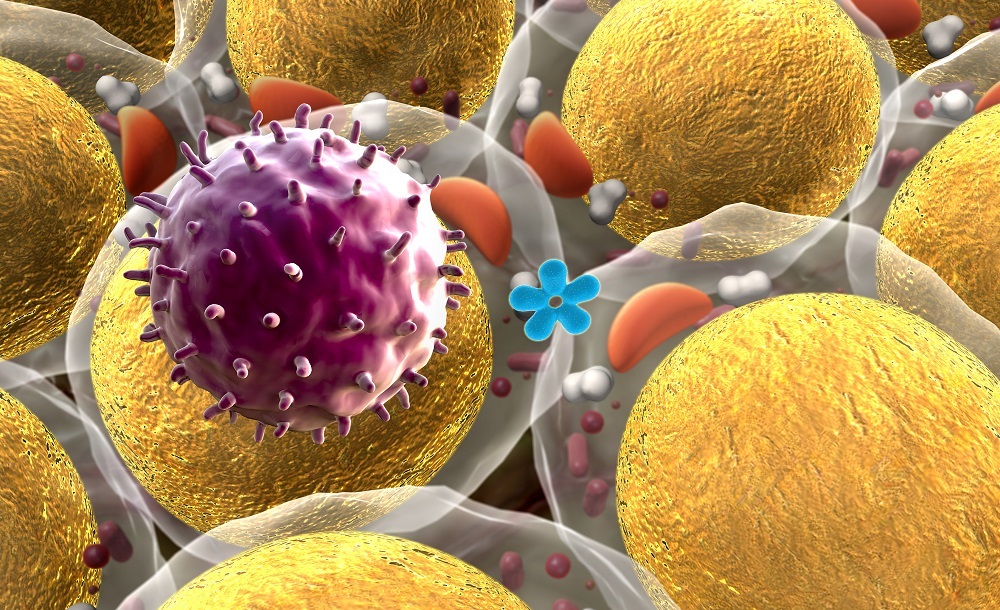Revolutionary stealth virus holds promise for cancer therapy
Up until now, viral vectors couldn’t be used widely in cancer therapy. Researchers just announced that they re-engineered an adenovirus with a novel stealth technique that enables it to be used to fight tumors. [This article first appeared on the website LongevityFacts.com. Author: Brady Hartman. ]
Viral vectors are well-developed tools used by scientists to deliver genetic material into cells. Unfortunately, they haven’t worked well to treat cancer until a group of researchers in Switzerland re-engineered them to enable them to be used in cancer therapy.
Researchers from the University of Zurich have re-engineered an adenovirus for use in cancer therapy. To achieve this, scientists developed a new protein shield that hides the virus and protects it from being eliminated by the body. Moreover, adapters on the surface of the virus enable the reconstructed virus to target and infect tumor cells.
Viral Vectors
Viruses have natural properties that make them ideal tools – called viral vectors – to insert foreign genes to fight hereditary diseases or cancer. Scientists modify the genetic code of viruses in the laboratory to carry therapeutic DNA into the target cells, where it can be integrated into the genome to attack cancer. This involves removing the viral DNA from the virus and replacing it with the therapeutic genes. In this way, the virus becomes a vector to transfer the desired gene into cells but not capable of taking over or harming cells.
Innumerable viruses can do this, however, the human adenovirus 5 has substantial advantages. Scientists can replace its genome with an entirely artificial one which contains only the desired genes. Lacking its original genetic material, the virus can no longer trigger diseases. Also, the genetic code of the adenovirus is large and does not integrate into the human chromosome.
Until now, scientists have been limited in their use of adenoviruses in cancer therapy. Because adenoviruses cannot infect cancer cells, they cannot inject the therapeutic genetic payload to fight the tumor. Moreover, adenoviruses are efficiently neutralized by the human immune system and rapidly eliminated by the liver.
However, all that changed recently when scientists rebuilt the viruses so that they efficiently recognize and infect tumor cells. This feat of wizardry was pulled off by a team led by Andreas Plueckthun, a professor at the Department of Biochemistry at the University of Zurich (UZH).
Tried and True Viral Vectors
CRISPR may get all the attention – however, viral vectors see far more action. This is because viral vectors are tried and true. Many gene therapy clinical trials rely on viral vectors to deliver the desired genetic payload. For example, Luxturna’s gene therapy – recently approved by the FDA – uses a viral vector to deliver a gene that partially reverses blindness. In another example, British doctors used a viral vector in a gene therapy clinical trial to treat hemophilia A and say they achieved “mind-blowing” results.

Taming the Adenovirus
Markus Schmid, the first author of the study, explains how the team pulled it off, saying
“For this purpose, we created molecules that act as an adapter between the virus and the tumor cell.”
These novel adapters cling tightly to the outer coat of the virus. Depending on their version, the adapters can bind to different surface molecules on the cancer cell. The research team tested adapters for several receptors such as EGFR and HER2, which are present on various types of tumor cells. Only viruses that were equipped with these adapters were able to infect the cancer cells.
Next, the scientists hid the virus under a novel protein coat, shown in the photo above, which serves as camouflage for the virus to protect it from the immune system. The scientists used an existing antibody that they redesigned as a basis for this shield. In an interdisciplinary collaboration between the research teams, the exact architecture of the complete protective coat was described almost down to the atomic level.
The novel shield protects the redesigned virus from the immune system and also prevents the virus from being eliminated by the liver. The liver typically removes unmodified adenoviruses from the bloodstream, frequently making therapeutic applications impossible.
With its shield and its adapter, these viral gene shuttles efficiently infected tumor cells in laboratory animals. The upshot is that this virus works after being redesigned using sophisticated protein engineering techniques.
Using these stealth gene carriers, the research team want to develop novel therapies for different types of cancer. Professor Plueckthun is optimistic, saying
“With this gene shuttle, we have opened up many avenues to treat aggressive cancers in the future, since we can make the body itself produce a whole cocktail of therapeutics directly in the tumor.”
References
The University of Zurich. “Stealth virus for cancer therapy.” [Press release] The University of Zurich. January 31, 2018. Link to the press release in medicalxpress.
Markus Schmid et al. “Adenoviral vector with shield and adapter increases tumor specificity and escapes liver and immune control.” Nature Communications (2018). DOI: 10.1038/s41467-017-02707-6. Link to Nature article.
Hartman, B. “FDA Approves First Ever Gene Therapy for Inherited Disease.” Web. Retrieved Jan 31, 2018. Link to gene therapy for blindness article.
Hartman, B. “Groundbreaking Gene Therapy Trial Aims to Cure Hemophilia.” Web. Retrieved Jan 31, 2018. Link to gene therapy for hemophilia article.
Like this post?
- Share this post on social media and help us spread the word– It only takes one click on any of the social media links on this page.
- Follow us on social media – Choose Reddit or Google+.
- Sign up for our email list – We use your email to notify you of new articles. We will not send you spam, and we will not share your email address. You can cancel at any time.
- Tell us what you think – Scroll down to enter your comments below.
References
Cover photo credit: Ugreen. Getty Images(iStock).
Disclaimer
Diagnosis, Treatment, and Advice: This article is intended for educational and informational purposes only and is not a substitute for qualified, professional medical advice. The information and opinions provided herein should not be used during any medical emergency or for the diagnosis or treatment of any medical condition. Consult a qualified and licensed physician for the diagnosis and treatment of any and all medical conditions. Experimental therapies carry a much higher risk than FDA-approved ones. Call 911, or an equivalent emergency hotline number, for all medical emergencies. As well, consult a licensed, qualified physician before changing your diet, supplement or exercise programs.
Photos, Endorsements, & External Links: This article is not intended to endorse organizations, companies, or their products. Links to external websites, mention or depiction of company names or brands, are intended for illustration only and do not constitute endorsements.
